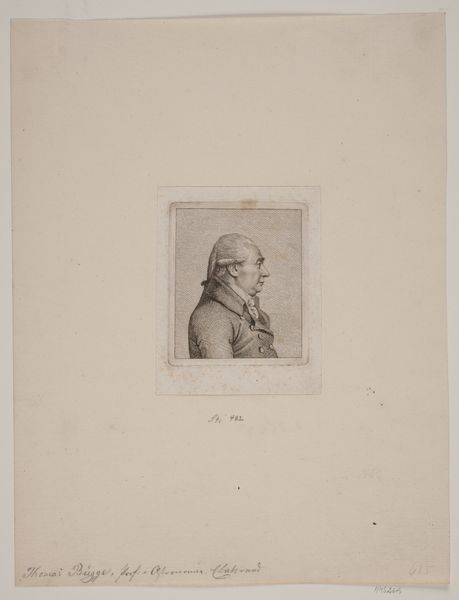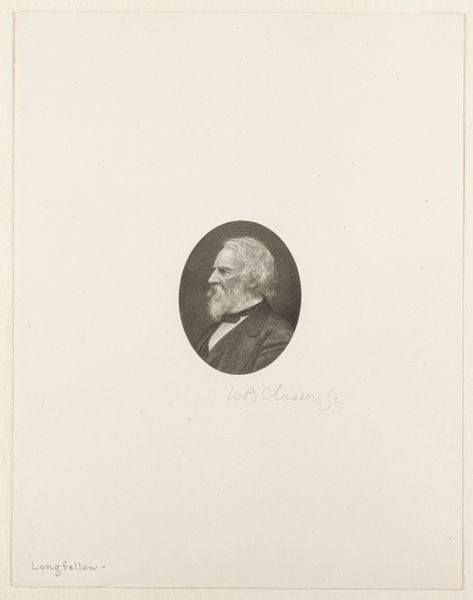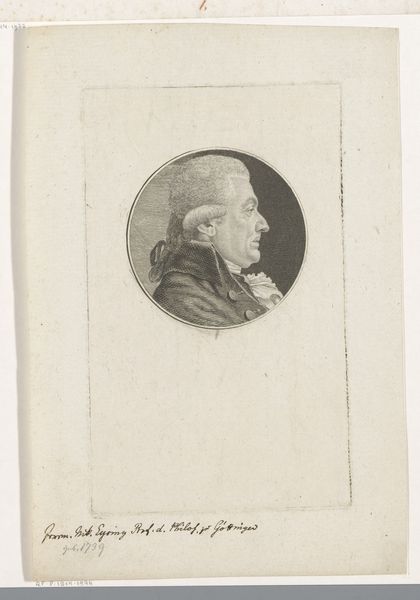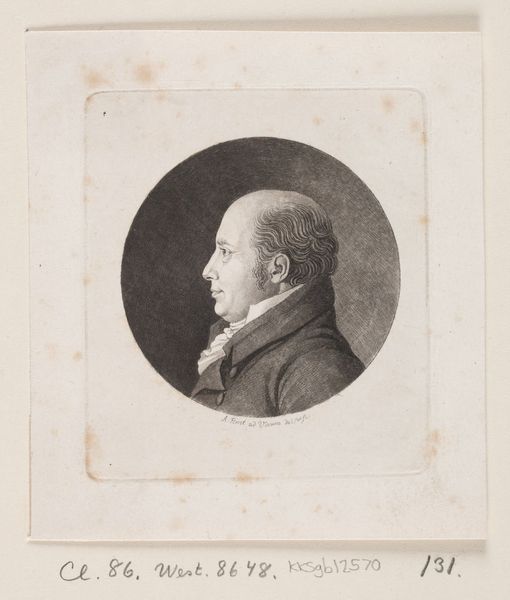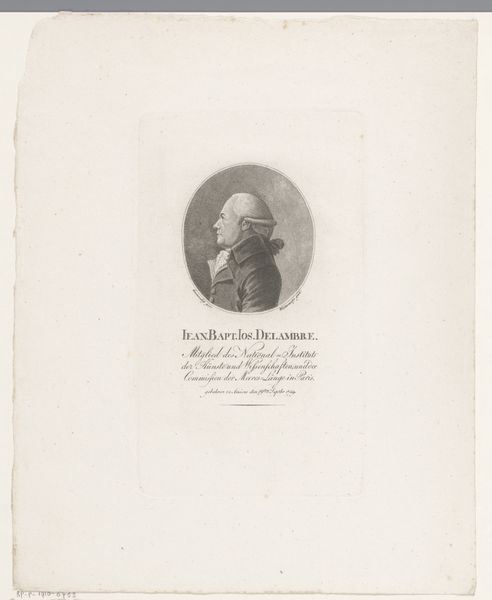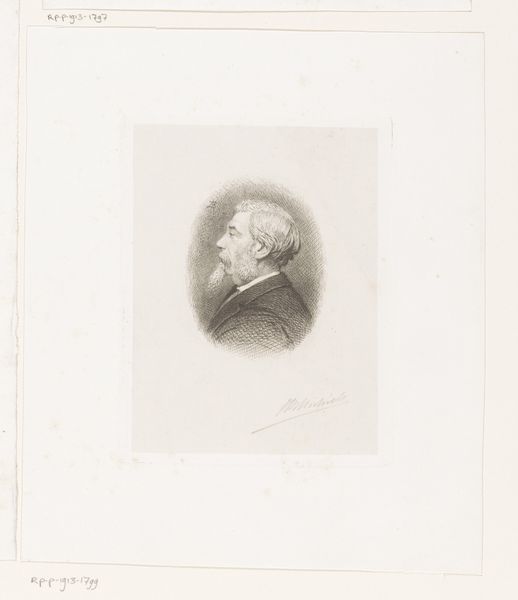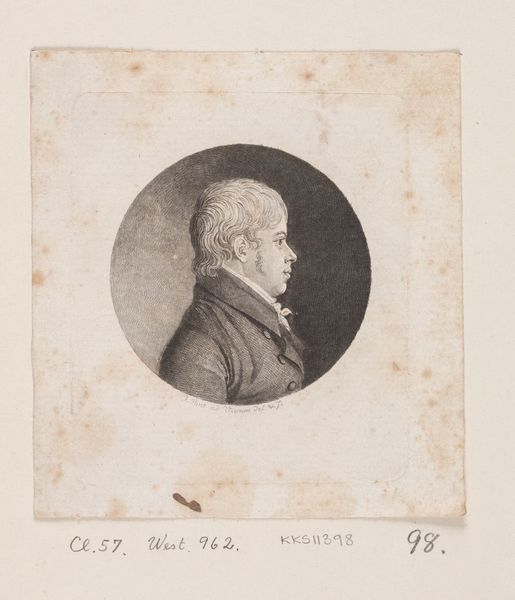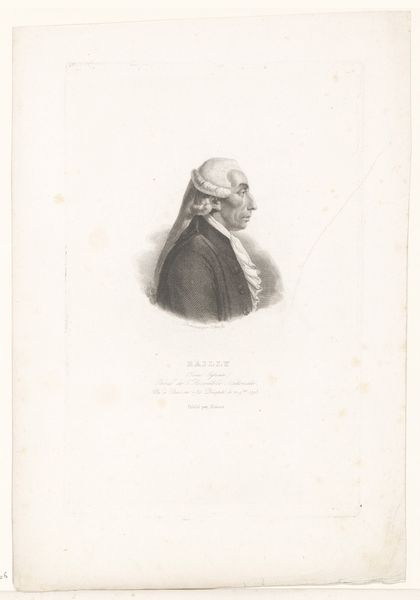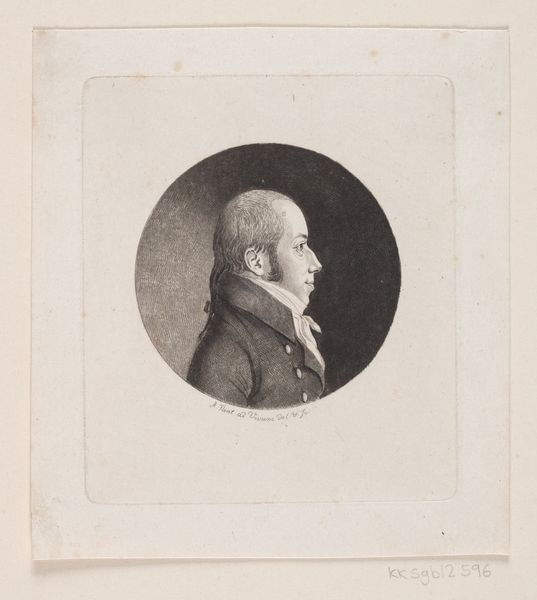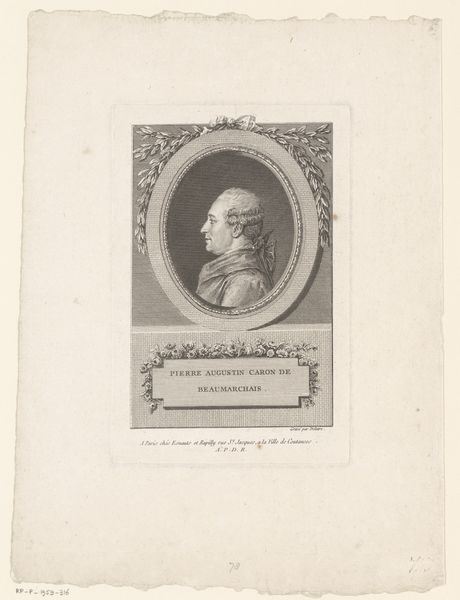
drawing, lithograph, print, paper, engraving
#
portrait
#
drawing
#
neoclacissism
#
lithograph
# print
#
paper
#
personal sketchbook
#
romanticism
#
france
#
engraving
Dimensions: 74 × 57 mm (image); 272 × 212 mm (sheet)
Copyright: Public Domain
André Dutertre made this delicate "Portrait of a Man" around 1817, using etching on paper. Think about the labor involved: a metal plate carefully coated, a design incised with precise tools, then submerged in acid, and finally printed. The character of the paper, with its own particular texture and absorbency, directly influenced the final appearance of the print. This wasn't just about replicating an image, but about embracing the inherent qualities of the materials and processes. The etched line, so characteristic of the medium, becomes a language in itself, defining form, texture, and light with remarkable efficiency. The artist engages with a whole lineage of printmaking traditions, a lineage that sits alongside the development of both craft and fine art. Considering this, we see how materials, making, and context are essential to grasp the full meaning of the artwork.
Comments
No comments
Be the first to comment and join the conversation on the ultimate creative platform.


